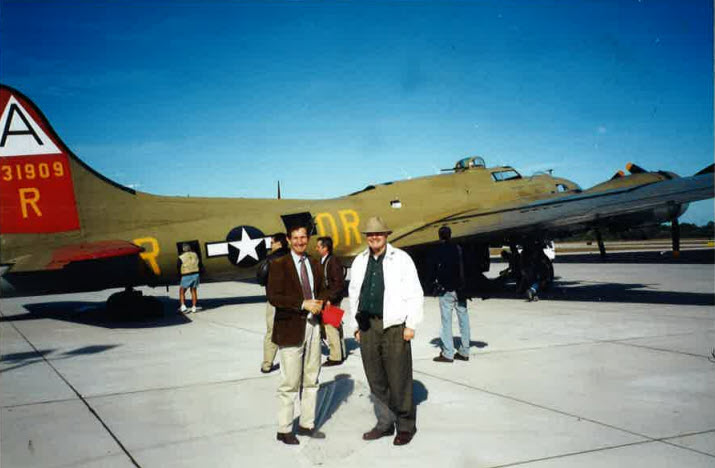Requiem for a Classic
The sight of a B-17 spiraling down in smoke or plunging in pieces was not terribly shocking over Western Europe in 1943 or 1944. America’s famous Flying Fortress, although prized by its crews for its ability to bring them home despite serious battle damage, was not invincible. Of the nearly 13,000 Boeing bombers built, more than 4,700 went down in combat, most of them in the skies over Germany and France. But none of those casualties created anything like the shock in Dallas last week when thousands of people at an air show saw a B-17 disintegrate at low altitude when it collided with a smaller fighter plane. All five people aboard the planes died.
The tragedy is under investigation, but from the video already published, it appears the fighter plane hit the B-17 in the middle of its fuselage, and the force of its spinning prop broke the bomber in half. It is ironic that the fighter was the Bell P-63 Kingcobra, a variation of the P-39. That plane was ill-fated from its debut in the early days of World War Two.
It was one of the few modern fighters available when the United States entered the war. An innovative design, the engine was behind the pilot and connected to the prop with a long crankshaft. It was troublesome from go. Pilots worried about that crankshaft running underneath their seats. Although it had a sleek design, it never lived up to its high speed billing and did not fare well against Japanese fighters in the early days of the South Pacific conflict. It was replaced as soon as better fighters arrived. The British rejected it because it lacked high altitude capability, which made it useless against the German fighters of that era. Most of an improved version, the Kingcobra, went to Russia, which would take anything that flew. They used it in a low level ground attack role.
B-17s have performed in many air shows and demonstrations over the years. Most are routine, but there have been other accidents. One came close to home. In 2003, the Collings Foundation brought its Fortress to Stuart and invited the press to take a ride. We accepted eagerly. The flight was brief, only about 15 minutes from Stuart to Vero Beach. There were small benches on both sides of the plane, but you were allowed to roam about. We spent some time near the tail wheel which was being cranked by hand (a surprise) and met the man doing the job. He was Ernest (Mac) McCauley, who we later learned was one of the most experienced B-17 pilots.

The author, right, following a B-17 flight in Vero Beach.
The pilot that day was a young woman, who apparently was not totally trusted by McCauley. As we prepared for takeoff we heard him mutter, “That girl is going to ruin this plane.” Whatever disturbed him was not obvious to this passenger. Anyway, the flight went smoothly, and we came home feeling fortunate to have flown in a classic. Fast forward to October, 2019. A B-17 with 13 people aboard made a crash landing at Bradley International Airport in Hartford, Conn. It seemed the plane had engine trouble on takeoff and could not gain altitude. The pilot shut down an engine and turned the plane back to the airport. But it turned out its approach speed was too slow and it hit ground short of the runway, skidded into a building and burst into flames. The pilot and six others died.
The tail of the plane survived the flames, and from that, we were able to tell from the serial number that it was the same plane we had flown years before. An investigation determined the crash was caused by inadequate maintenance and pilot error. The pilot, who was also in charge of maintenance, did not survive to defend himself. He was Mac McCauley, the same man who criticized the young woman who took us up from Stuart and brought us down in one piece in Vero Beach.
